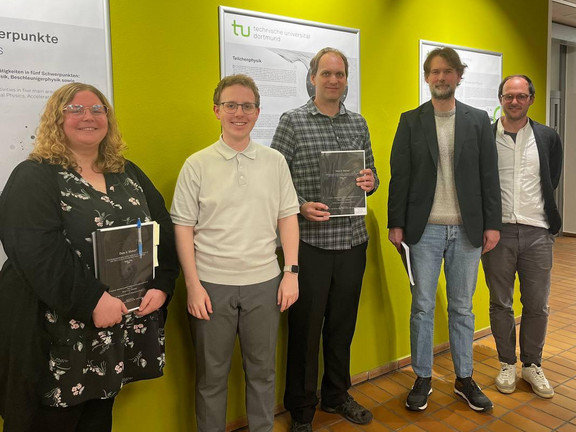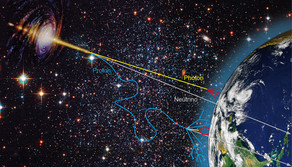Dr. Stefan Fröse completes his PhD at our chair
- News
- Allgemein

We are pleased to congratulate Dr. Stefan Fröse on the successful completion of his PhD at our chair. In his PhD thesis entitled "Does it Matter? Novel Background Modelling and First Application of Asimov Datasets for Dark Matter Searches in the Coma Dwarf Galaxy with MAGIC", he investigated new approaches for the indirect search for dark matter using data from the MAGIC telescopes in the context of the SFB 1491.
Dark matter is invisible and still not fully understood, but it is thought to play a key role in shaping the structure of the universe. Many theoretical models suggest that dark matter could interact in some way with known particles from the Standard Model of particle physics. One popular type of dark matter candidate is the so-called Weakly Interacting Massive Particle (WIMP), which could annihilate into ordinary matter, producing gamma rays in the process. These gamma rays are expected to be produced in enhanced form in regions where dark matter is densely concentrated, for example, in dwarf galaxies.
Dr. Stefan Fröse's PhD thesis focuses on the search for such gamma rays from the dwarf galaxy Coma Berenices using data from the MAGIC telescopes. Since these telescopes observe the light from particle showers in the Earth's atmosphere caused by incoming gamma rays, they also pick up a lot of background noise from cosmic rays.
To distinguish the potential dark matter signal from the remaining background after the separation of gamma and cosmic rays, a new method called the exclusion-rotation method was developed to build a more accurate, three-dimensional model of the background. In addition, previous studies have only examined the energy of the incoming signals. Dr. Stefan Fröse's work extends the analysis to include spatial information. This is the first time that a full three-dimensional analysis of this type of data has been done for a dwarf galaxy observed by MAGIC. Due to this added complexity and the resulting large size of the data, new tools were required for efficient analysis. Therefore, Asimov data sets were used for the first time with MAGIC data, reducing the need for extensive simulations and saving computational resources. This approach has been implemented in a new Python package called TITRATE.
Dr. Stefan Fröse's study found no evidence for dark matter, but the new methods allowed for setting improved upper limits on how strongly dark matter particles might interact. We thank Stefan for his contributions to our research and wish him all the best for his future career.

![[Translate to English:] [Translate to English:]](/storages/app-physik/_processed_/3/a/csm_APPGroupphoto2023_001_small_858e4405eb.jpg)


